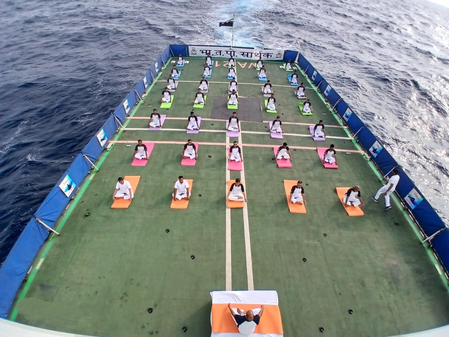
Seoul, Aug 29 (IANS) The radiation levels in seawater near South Korea were found to have been within the safe range despite Japan’s release of contaminated water from its crippled Fukushima nuclear power plant, Seoul’s Oceans Ministry said on Tuesday.
The Ministry’s emergency tests on four locations in its territorial waters and high seas showed that the concentration levels of cesium and tritium stood well below the standard set by the World Health Organization for drinking water, Vice Oceans Minister Park Sung-hoon said at a media briefing here.
The South Korean government has carried out emergency radiation tests on about 30 spots in the waters since August 24 when Japan began discharging radioactive water from the power plant into the ocean, and all the samples have met the safety standards, reports Yonhap News Agency.
No radiation has been detected in domestic seafood or imported marine products so far, Park added.
The government expanded the number of testing points from the previous 92 spots to 200 amid public concerns about the potential impact of the controversial release, and vowed to further raise its number to a total of 243 points next year.
On August 23, Japan initiated the discharge of the contaminated water, a process expected to span more than three decades, despite lingering health and environmental concerns from neighbouring countries.
More than a million tonnes of water stored at the nuclear plant will be discharged over the next 30 years.
Hit by the magnitude-9.0 earthquake and an ensuing tsunami on March 11, 2011, the Fukushima plant suffered core meltdowns that released radiation, resulting in a level-7 nuclear accident, the highest on the International Nuclear and Radiological Event Scale.
The plant has been generating a massive amount of water tainted with radioactive substances from cooling down the nuclear fuel in the reactor buildings, which are now being stored in about 1,000 storage tanks.
Plant operator Tokyo Electric Power Company (TEPCO) said it plans to carry out the first round of release over the next 17 days to discharge 7,800 tonnes of the radioactive wastewater.
In the current fiscal year through next March, a total of 31,200 tonnes are slated for discharge, equivalent to the storage capacity of 30 tanks, according to TEPCO.
The radioactive wastewater has been diluted as planned before being discharged via an underwater tunnel 1 km from the plant.
–IANS
ksk




